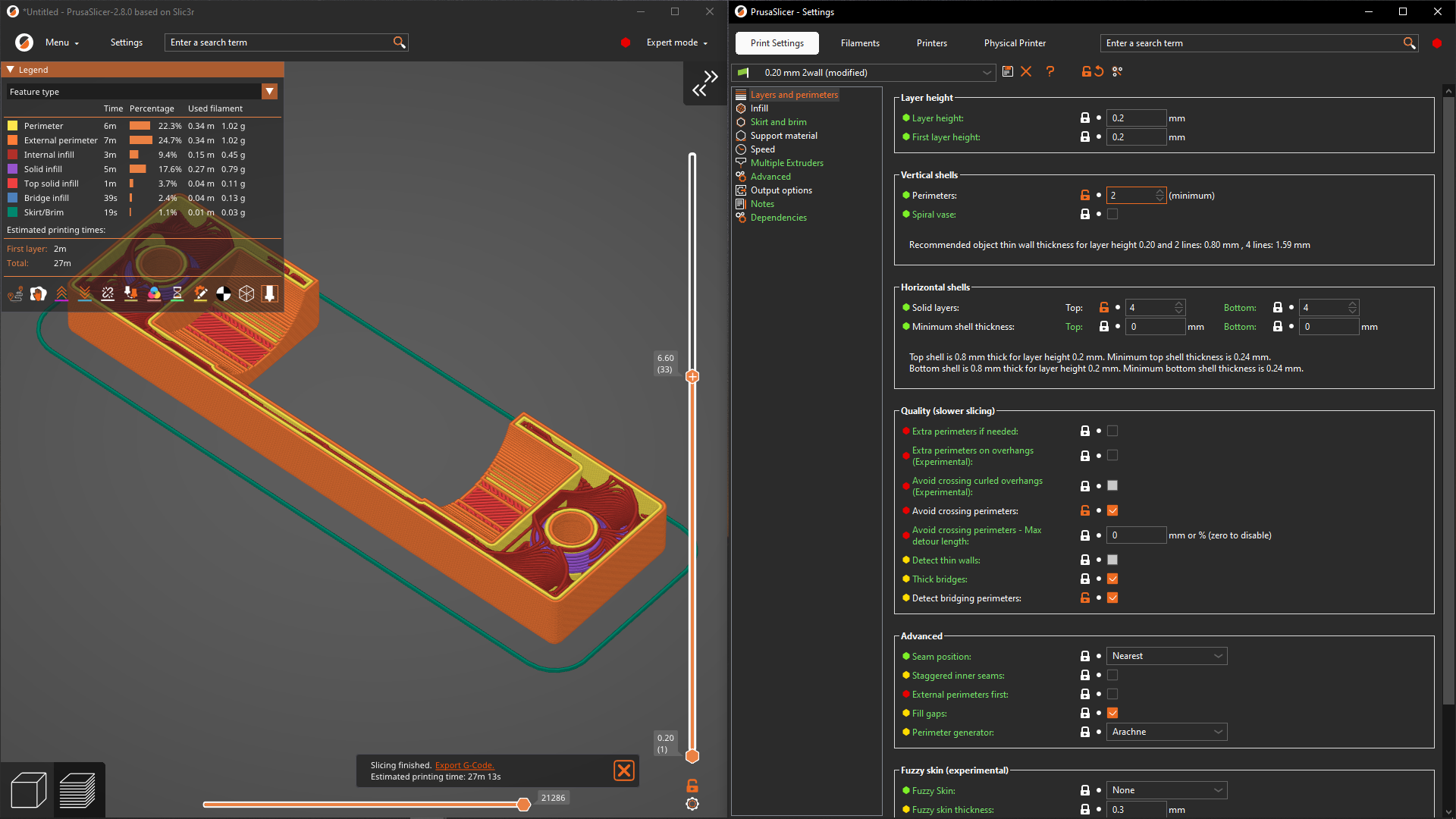

It exports as F3D (probably readable by future versions of Fusion) and STEP (standard but with less fidelity) by default.
See also https://lemmy.world/u/p1mrx


It exports as F3D (probably readable by future versions of Fusion) and STEP (standard but with less fidelity) by default.


https://github.com/aconz2/Fusion360Exporter lets you bulk export all of your projects to local storage.
There is some good stuff in this release. Go to Preferences > GUI and check “Show sidebar collapse/expand button” + “Settings in non-modal window”. Now you can put the Preview and Print Settings windows side-by-side, and see the result of every change immediately. This also requires “Background processing”, but that’s been available for ages.



all the features you know and love from things up the tree
Did OrcaSlicer ever bring back the option to slice automatically when changing settings? It’s called “Background processing” in PrusaSlicer.
A VPN encrypts traffic between your device and the VPN server, and any packet on that path includes your IP address. So anyone attempting to decrypt your VPN traffic can trivially distinguish your packets from other users of the VPN server.
So your threat model assumes an actor with a quantum computer capable of breaking RSA, but not a regular computer capable of filtering by IP address?


deleted by creator


PLA, but I’ve only used it for sanding small models so heat wasn’t an issue. PETG should be more heat resistant.


Yeah, but those sanding pads cost more than generic sandpaper.


Does mechanical error actually matter when using sandpaper? It seems like most of the error comes from holding the tool with your hands.


You could still fill a watertight gyroid lattice with resin, if both volumes are accessible.
Though the defects are probably useful for releasing air bubbles.


The floorists forgot to enable Linear Advance.
Pepperidge YouTube remembers: https://www.youtube.com/watch?v=ayOLECuygTQ


One day filament will come with DRM so you can’t print it backwards. Only a pirate would do that!
I was monitoring this print remotely (Bambu P1S), so I’m not sure what actually happened. It’s possible that it failed for other reasons, and then the tool head got tangled in spaghetti and disassembled itself.


Then it would be a total loss. Nothing’s out there.


It’s not over 'til it actually sinks. If they can tow it back to port, it might be repairable instead of a total loss.
STEP is at least marginally better than STL, because it can represent stuff like circles, instead of just a mesh.